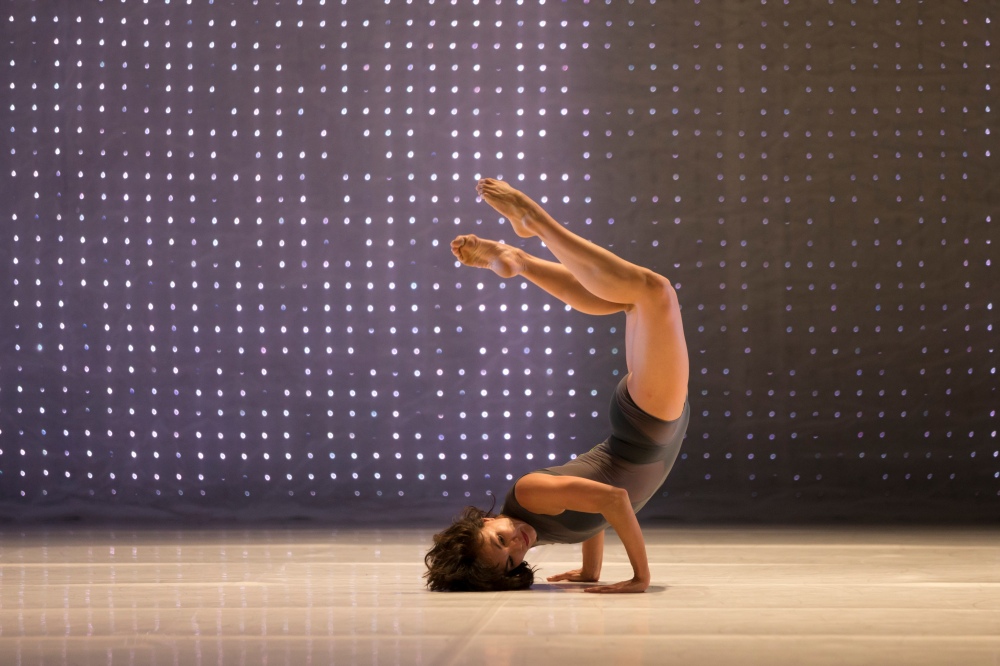Roslyn Packer Theatre, Sydney. October 5.
Sydney Dance Company artistic director Rafael Bonachela clearly adores 2 One Another. Made in 2012, it was revived in 2013, 2014 and 2015, is much travelled and this season celebrates its 100th performance by making its first reappearance in Sydney. Next stop is Shanghai.
Audiences love it too, and why not? It’s a glamorous production that shows the full company in ferocious form. Just when you think the SDC dancers couldn’t possibly look more magnificent, more dynamic, more super-human, they do.

There are only six dancers of SDC’s current complement of 16 who were in the original cast but Bonachela chooses his company members well. The youngest of them haven’t yet fully developed the combination of intensity, muscularity and sophistication that the more experienced dancers wear like a second skin but they add other colours. Their hunger for the work is palpable and rather touching.
It’s a beautiful thing to see three young men, Sam Young-Wright, Izzac Carroll and Nelson Earl, growing into themselves. Young-Wright and Carroll are tall and rangy and both still have a coltish air about them; Earl brings a sense of danger to the stage. Each has a distinct personality.
Tony Assness’s design, Nick Wales’s music and Benjamin Cisterne’s lighting work together brilliantly to create a highly charged sensory experience and Bonachela’s choreography is intricately detailed and patterned. Those 16 amazing dancers are pushed to the limit and beyond in a complex weave of group dynamics, duos and solos.

The title of the work is illustrated in the opening moments. Most of the dancers stand close to one another, flanked on one side by a solo figure and on the other by a seated duo. All are dressed similarly in form-fitting dark green with mesh inserts and, as lights flash and unsettling music thunders, they gesture in unison. The unanimity doesn’t hold and soon the piece is off and running.
Partnerships form, dissolve and reform differently, echoed by changing paintings in light on the huge LED screen at the back of the stage. For some sections the music moans and groans like a living creature while others moments are bathed in the aural glow of the Baroque and the Renaissance. The score also incorporates some spoken word in the form of poetry fragments by Samuel Webster.
It’s hard to decipher all of Webster’s contribution in the sound mix and greater access to it would have been useful.
The 2012 program prints some of Webster’s lines and they speak of great intimacy. Bonachela writes in his program note (both then and now) that Webster responded to things he saw from the dancers in the rehearsal room at an early stage of development and then later the dancers used his words to create movement. “The text that Samuel created is very beautiful and full of love and emotion and I sought to create movement that explored all those intensities of human interaction,” Bonachela writes.

For the most part 2 One Another doesn’t achieve that goal. There is so much to stimulate the eye and please the ear that the somewhat cool temperature takes a little bit of time to register, but after perhaps 40 minutes of wonderful dancing one looks in vain for deep human connection. Assness’s CV bulges with creative direction for big events and he knows how to deliver the wow factor. It’s just that 2 One Another could do with a bit less of that.
Individual company members stir the blood, as they always do, although Assness has done his best to impose a degree of anonymity on the dancers by styling them in a way that means you have to look twice and three times at some of them to confirm they are indeed who you think they are.
Still, it’s impossible not to register Janessa Dufty and Charmene Yap in particular (one of Bonachela’s most precious attributes as a choreographer is the equal standing he gives women and men). Dufty and Yap were both in the premiere of this work five and a half years ago and their power and authority are still a joy to see.

The same is true for Juliette Barton, who has been with SDC since 2009 and is ever more magisterial as the years go by. Some warmth emerges about two thirds of the way through the 65-minute piece when the dancers appear in looser, red garments and, in a memorable duet, Barton and Bernhard Knauer reach for something beyond exhilarating movement.
Ends October 14.